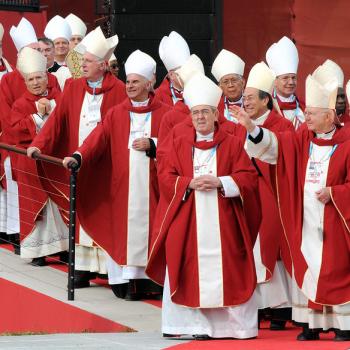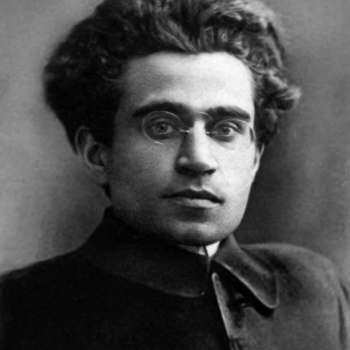Classical scholar Peter Brown has published in the New York Review of Books an excited review of Kyle Harper’s From Shame to Sin: The Christian Transformation of Sexual Morality in Late Antiquity (Harvard University Press). The book, which is said to break new ground in the scholarship of ancient Rome, shows that the vaunted sexual permissiveness of ancient Rome was inextricably linked to the practice of slavery, with slave boys and girls being the primary sex objects who could not object to how they were used. He also shows how the early Church, which decisively challenged and successfully changed this brutal and hypersexualized culture, connected sexual morality with freedom.
After the jump, an excerpt from the review with a link to the book. Question: Could Christianity transform sexual morality once again?
From Rome: Sex & Freedom by Peter Brown | The New York Review of Books:
The jolly free-for-all, which we like to imagine as forming a timeless human bond between us and the ancients, was based upon the existence of a vast and cruel “zone of free access” provided by the enslaved bodies of boys and girls. Slavery, “an inherently degrading institution,” was “absolutely fundamental to the social and moral order of Roman life.”
On this topic, Harper speaks with rare authority and, given the nature of the subject, with impressive restraint. In his first book, Slavery in the Late Roman World, AD 275–425, Harper showed that the late Roman world had remained a slave society deep into Christian times.4 In From Shame to Sin, Harper takes us back into this world. It is one that we rather wish it had not been: “a society whose moral lineaments were sculpted by the omnipresence of slaves” and where “the flesh trade was a dominant institution.”
Harper’s book makes plain that the modern spate of works on sexuality and on the construction of gender in Roman and early Christian times, ingenious though they may be, are lightweight confections compared with this gross, ever-present fact of Roman life. We must look up from our literary games and see what is almost too big to be seen—the fact of slavery, towering above us like the trees of an immense forest of unfreedom that covered the Roman world. What mattered, in Roman law and in Roman sexual morality, had little to do with sex. It had everything to do with whose bodies could be enjoyed with impunity and whose could not be touched without elaborate formulas of consent.
The joys of sex were there for all. Harper shows how the puritanism of the Romans in relation to their own spouses has been greatly exaggerated. But the primary school of sexual endeavor remained, to an unusual degree, the bodies of slaves—along with the bodies of the poor and of prostitutes, who were all too easily sucked into the gravitational field of dishonor associated with outright slavery. Then Harper sums up his feelings: “The laws deflected lust away from the freeborn body, and slaves provided a ready outlet.”
This view could lead to a banal conclusion. Sex was shocking to the early Christians. Sex in the Roman world was intimately linked to slavery. Ergo: Christians, once they came to power after the year 312, predictably hammered the sexual codes of a society glutted on the ready availability of servile bodies and even cut away (if somewhat more tentatively than we might wish) at those parts of the slave system—such as prostitution—that fostered sexual indulgence.
But Harper realizes that this is too facile a conclusion. The excitement of his second chapter, “The Will and the World in Early Christian Sexuality,” lies in the manner in which he traces the sheer fierceness of Christian attitudes toward sexuality back to how sexual morality merged with the charged issue of freedom. Christians rethought these ideas in profound alienation from a society that took unfreedom for granted. They also dissociated themselves from a view of the cosmos that seemed to support a chill “indifference toward the brutalities accepted in the name of destiny.”
This is the second grand theme in Harper’s book. From Saint Paul onward, the great issues of sex and freedom were brought together in Christian circles like the enriched ore of an atomic device. For Paul, porneia—fornication—meant a lot more than premarital fooling around. It was a brooding metonym, “enriched” by an entire spectrum of associations. It stood for mankind’s rebellion against God. And this primal rebellion was shown most clearly in the topsy-turvy sexual freedom ascribed first by Jews and then by Christians to the non-Christian world.
But then, what was true freedom? Freedom also was a mighty metonym, of which the freedom to decide one’s sexual fate was only one, highly “enriched” part. Above all, it meant “freedom” from “the world.” And by “the world” Christians meant, bluntly, the Roman society of their own times, where unfreedom was shown in its darkest light by the trading and sexual abuse of unfree bodies. It no longer mattered, to Christians, with whose bodies, from which social categories, and in what manner sex might happen. From Paul onward, for Christians, there was right sex—sex between spouses for the production of children; wrong sex—sex outside marriage; and abhorrent sex—sex between same-sex partners. Wrong sex of any kind was a sin. And a sin was a sin. It was not a social faux pas, deemed an outrage in one situation and accepted in another.
Seldom has so great a simplification been imposed on a complex society. The unexpected victory of Christian norms in the fourth, fifth, and sixth centuries was so thorough that any alternative ordering of moral frontiers within a society became unthinkable. The intricacies of a status-based morality still require patient reconstruction by modern historians of Rome, like the bones of some flamboyant creature of the Jurassic age. The Christian victory was one that caused a chasm to open up between ourselves and the ancient world.
















